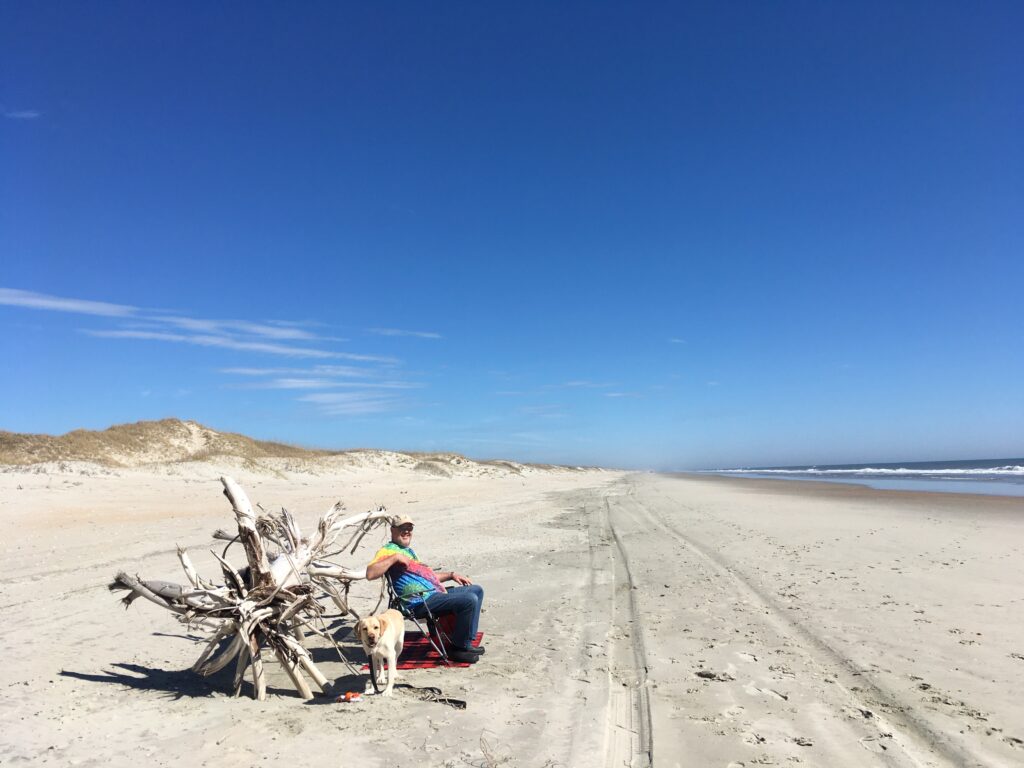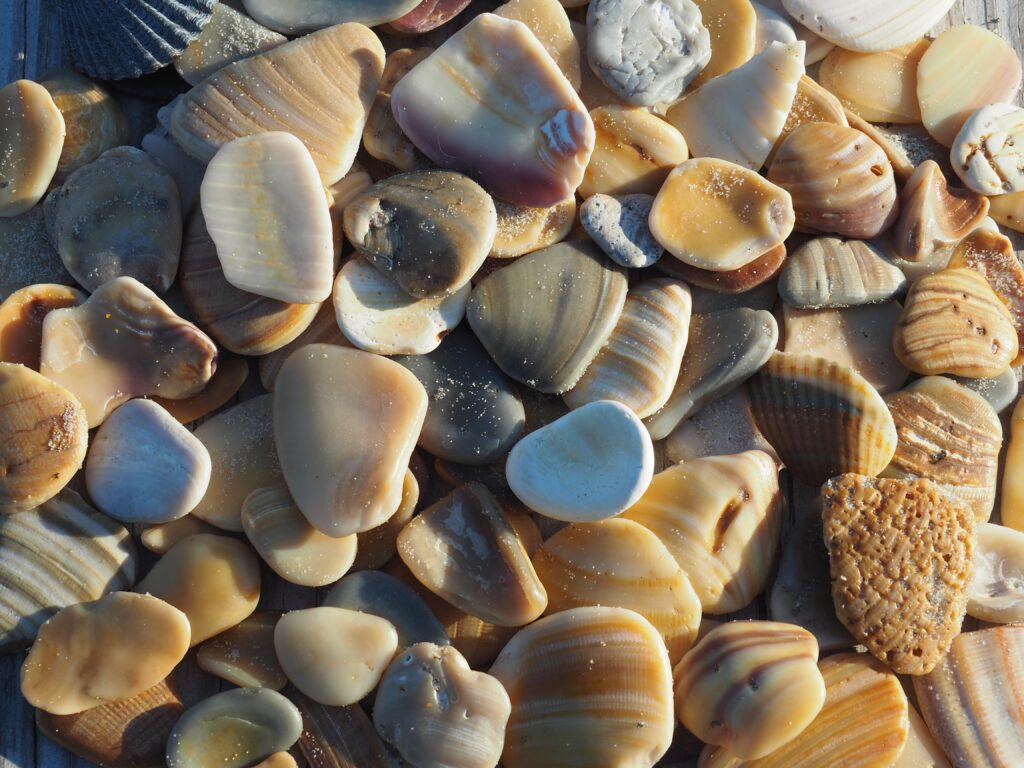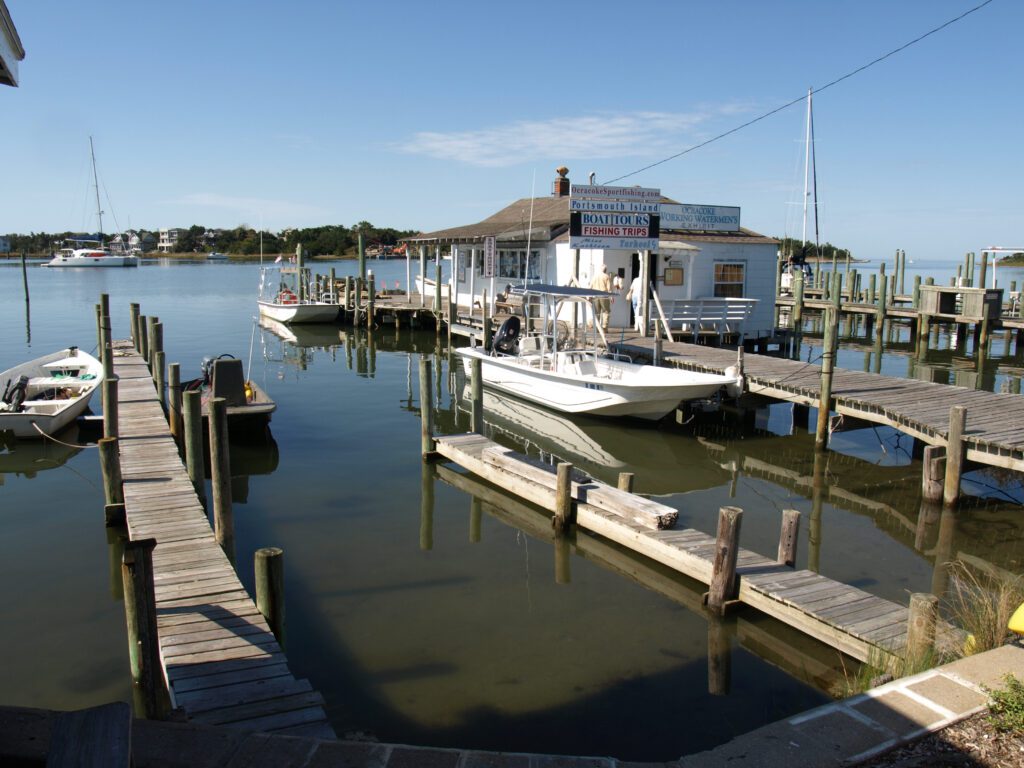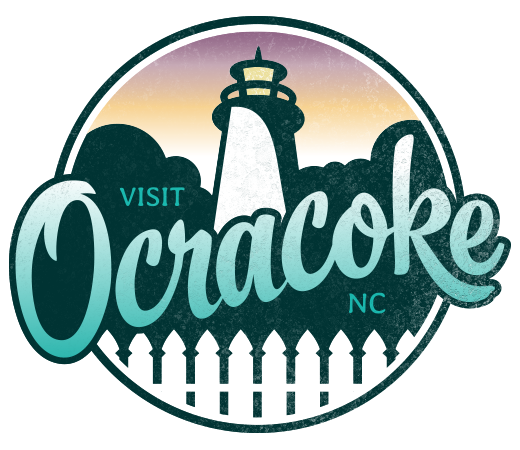Ocracoke for the Retired Traveler

Count yourself lucky if you’ve reached that golden stage where the days of work are in the rearview mirror, and the days ahead are filled with time, resources, flexibility, enduring curiosity, and—touch wood—good health. And count yourself double lucky should you be retired and find yourself visiting Ocracoke Island. Because Ocracoke is for those who can slide into its laid-back groove; those who appreciate there isn’t always something new here. The beauty of Ocracoke is what it’s not.
There’s a saying on island: If the world ended today, Ocracoke would hear about it next week.
We visit Ocracoke every year and even though very little changes, we always come away saying, “Wow! Can hardly wait to go back next year.” And we do.
What’s special about this place?
Hopping onto a ferry, I always feel like I am on vacation time. And the only way to get to Ocracoke is by ferry. In the 1950s the first car ferry consisted of two planks nailed onto two rowboats. These days, modern vessels join the 16-mile island to the Outer Banks at Cape Hatteras, and to the North Carolina mainland at Cedar Island and Swan Quarter.
The island checks all our boxes: quiet and welcoming—there isn’t a single stoplight and you couldn’t get lost if you tried; a leisurely pace of life; luxurious stretches of beach that are perfect for strolling, shelling, kite flying, and fishing; seafood shops where we pick up the day’s catch unloaded right off the boat; a quirky little village with unique galleries and eateries; and a jet-black nighttime sky splashed with stars down to the horizon.
Ocracoke’s history is both serene and, well, sometimes wild

In the Revolutionary era, the little island was a route to the rich mainland ports. The first settlers in the 1700s were experts who piloted schooners through the inlet until the steam engine meant goods could be transported inland and the need for pilots declined. People turned to subsistence fishing, shrimping, crabbing, and clamming.
Island life had its challenges. O’cockers were creative, salvaging building materials from shipwrecks. With the installation of modern amenities like electricity, a reverse osmosis water system, and regular ferry service, tourism blossomed.
A walk along Howard Street reveals an old Ocracoke curiosity: the backyard family cemeteries dating back to colonial times. There are more than 80 family cemeteries on the island; small, fenced enclosures where headstones mark the gravesites of ancestors.
The island’s Ocracoke Preservation Society Museum is filled with island antiques and displays on the fishing heritage, decoys, the impact on the community of the Civil War, and the island’s distinct Ocracoke Brogue (a unique mark of its somewhat isolated culture). Inside the red house on Back Road, storyteller, historian, and 10th-generation islander Chester Lynn has a museum as part of Annabelle’s antique shop. His collection includes plates used by Blackbeard and an oil lamp used in the island lighthouse.
The Ocracoke Light Station has reached the two-century mark, built in 1823 and one of the oldest lighthouses in the nation. It stands 75 feet tall with brick walls five feet thick at the base. The beacon still flashes a warning to ships navigating the area of shifting shoals nicknamed the Graveyard of the Atlantic.
The British Cemetery is the final resting place for four UK sailors who lost their lives when their trawler was torpedoed in 1942 by a German submarine. The bodies washed ashore and were buried in this tidy plot. Each May a ceremony is held to honor the sailors and to hang a new Union Jack sent from London by the Crown.
In the 18th century, merchant ships following the north-south current of the Gulf Stream created a golden opportunity for looting by pirates and privateers. Topping that list of scoundrels was the infamous Blackbeard. Ocracoke is where he met his demise in 1718 while anchored at nearby Teach’s Hole. The walking trail at Springer’s Point Preserve winds through an old maritime forest of bay trees, wax myrtle, and live oaks twisted by the wind, leading to the beach where locals claim Blackbeard dropped anchor.
Ahhh . . . the outdoors

The warmth of the people, the unhurried tempo of life, and the history draw us here, but I admit finding the long stretches of pristine beach irresistible. In the shoulder seasons—perfect times for the retiree—you may find you have the beach to yourself. We walk for hours, occasionally bending to scoop up shells, always on the lookout for pelicans diving for a meal or dolphins frolicking in the surf.
The protected beaches are part of the Cape Hatteras National Seashore. Access is simple—there are boardwalks and trails leading from marked entry points along Highway 12. The dunes are fragile, so stay on the trails. The beach is also perfect for throwing in a fishing line or parking a chair and sliding into a novel. In spring and fall birds are migrating along the coastline, including
endangered species like the piping plover and the American oystercatcher.
Travel tips:
Many local businesses close over the winter months, but the spring and fall shoulder seasons are perfect for the retired visitor.
The ferry routes are part of the Outer Banks National Scenic Byway. The ferry from the north is free; the larger ferries from the south have a modest fee.
There are several hotels and B&Bs on island. Private rentals in vacation homes can be booked through Ocracoke Island Realty and Blue Heron Realty. In addition to rooms, the Ocracoke Harbor Inn has vacation rental cottages.
Bicycles and golf carts are available for rent in the village
Make sure to have prescriptions filled before arriving. The Ocracoke Health Center is the only medical facility on island.




